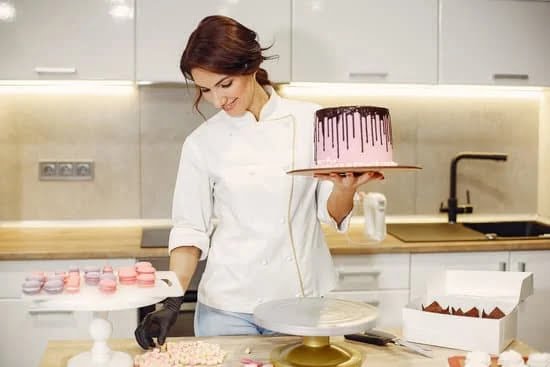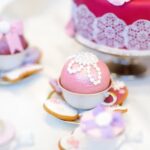Easter is a time for celebration and joy, filled with traditions and delicious treats. One of the most popular ways to mark this special occasion is by decorating an Easter cake. This not only adds to the festive spirit but also allows for a creative expression of the season. Whether you are a baking enthusiast or simply enjoy indulging in sweet confections, learning the art of decorating an Easter cake can bring added delight to your holiday festivities.
The act of decorating an Easter cake holds deep significance as it symbolizes rebirth, renewal, and the arrival of spring. It’s a way to express creativity and connect with loved ones through shared experiences. The process of creating a beautifully decorated Easter cake can be both therapeutic and rewarding, making it a meaningful tradition for many families around the world.
In this article, we will explore everything you need to know about decorating an Easter cake – from choosing the perfect recipe to essential tools and ingredients, step-by-step guidance on frosting and layering, creative decoration ideas, final touches, professional techniques, and tips for presentation. Embracing the joy of Easter through beautifully decorated cakes is not only a delightful way to celebrate but also an opportunity to create cherished memories with loved ones.
Let’s dive into the art of creating stunning Easter cakes that will surely impress and delight all who gather around your table during this special time of year.
Choosing the Perfect Easter Cake Recipe
When it comes to choosing the perfect Easter cake recipe, there are countless options to consider. From traditional fruitcakes to trendy and modern flavors, selecting the right recipe sets the foundation for your cake decorating adventure. Traditional Easter cake recipes often include ingredients such as dried fruits, nuts, and spices, while trendy options may feature unconventional flavors like matcha green tea or lavender-infused cakes.
One popular choice for traditional Easter cake is the classic simnel cake, a light fruitcake with marzipan frosting that has been associated with Easter since medieval times. On the other hand, more contemporary Easter cake recipes might incorporate zesty lemon flavors, floral infusions like elderflower or rosewater, or even unexpected additions such as caramelized white chocolate. Consider the flavor preferences of your intended audience when choosing a recipe for your Easter cake.
In addition to flavor, it’s essential to consider dietary restrictions and preferences when selecting an Easter cake recipe. With the increasing popularity of vegan and gluten-free diets, many bakers are adapting traditional recipes to accommodate these dietary needs. Regardless of the recipe you choose, make sure to consider any allergies or dietary restrictions that may impact your guests’ enjoyment of the cake.
| Traditional Easter Cake Flavors | Trendy Easter Cake Flavors |
|---|---|
| Classic fruitcake with marzipan frosting | Zesty lemon flavors |
| Spiced carrot or ginger cakes | Floral infusions like elderflower or rosewater |
| Simnel Cake | Caramelized white chocolate-infused cakes |
Essential Tools and Ingredients for Decorating an Easter Cake
Decorating an Easter cake is a delightful way to celebrate the joy and renewal of the Easter season. To create a show-stopping dessert that reflects the spirit of Easter, it’s important to have the essential tools and ingredients on hand. From classic decorating supplies to unique ingredients, here are the key elements you’ll need to adorn your Easter cake with beautiful designs.
First and foremost, having a good quality cake stand or serving platter is essential for showcasing your Easter cake. This will not only provide a beautiful backdrop for your creation but also make it easier to decorate without having to move the cake around too much. Additionally, investing in a rotating cake stand can be incredibly helpful when it comes to applying frosting and decorations evenly.
When it comes to decorating tools, piping bags and various tips are indispensable for creating intricate designs with frosting. These can be used to pipe borders, flowers, and other decorative elements onto your Easter cake. For more elaborate designs, consider using fondant tools such as rolling pins, cutters, and impression mats. As for ingredients, ensuring that you have a variety of food coloring gels or powders will allow you to create an array of vibrant hues for your decorations.
Lastly, don’t forget about edible embellishments such as sprinkles, edible glitter, and sugar pearls which can add texture and sparkle to your Easter cake. Fresh fruit like berries or citrus slices can also be used as natural adornments that complement the flavors of your cake.
| Essential Tools | Ingredients |
|---|---|
| Cake stand or serving platter | Food coloring gels or powders |
| Piping bags and tips | Sprinkles, edible glitter |
| Fondant tools: rolling pins, cutters | Sugar pearls |
Step-by-Step Guide to Frosting and Layering Your Easter Cake
When it comes to decorating an Easter cake, one of the most important steps is mastering the art of frosting and layering. This process sets the foundation for the overall design and appearance of your cake, so it’s essential to get it right. In this step-by-step guide, we’ll walk you through the process of frosting and layering your Easter cake like a pro.
Preparing Your Cake Layers
Before you can start frosting your Easter cake, you’ll need to ensure that your cake layers are properly prepared. This includes leveling the tops of each layer to create a flat surface for stacking, as well as filling any gaps or cracks with additional frosting or filling. Make sure that your cake layers are completely cooled before you begin the frosting process to avoid any melting or sliding.
Frosting Your Cake
Begin by placing a dollop of frosting on your cake stand or serving platter to secure the bottom layer of your cake in place. Place your first layer on top of the dollop and gently press down to adhere it to the stand.
Then, use an offset spatula to spread a generous amount of frosting over the top of the first layer, working from the center outwards. Repeat this process with each additional layer, making sure to spread an even layer of frosting between each one.
Creating a Crumb Coat
After stacking all of your cake layers, apply a thin layer of frosting around the entire exterior of the cake to create what is known as a “crumb coat.” This initial coat seals in any loose crumbs and creates a smooth surface for adding more frosting later. Once applied, chill the cake in the refrigerator for about 15-30 minutes to allow the crumb coat to set before moving on to adding your final decorative layer of frosting.
With these step-by-step instructions for frosting and layering your Easter cake, you’ll be well on your way to creating a beautiful canvas for adding creative decorations that celebrate the spirit of Easter.
Creative Easter Cake Decoration Ideas
When it comes to decorating an Easter cake, the possibilities are endless. From pastel palettes to Easter-inspired designs, there are numerous creative ideas to make your cake stand out as the centerpiece of your Easter celebration. Whether you prefer a more traditional approach or want to try something trendy, there are plenty of options to consider when decorating your Easter cake.
One popular trend for Easter cake decoration is incorporating pastel colors. Soft shades of pink, blue, yellow, and green can create a beautiful and whimsical look for your cake. Consider using these colors in the frosting, fondant decorations, or even edible flowers to add a touch of springtime charm to your dessert.
If you’re feeling inspired by the holiday itself, consider incorporating Easter-inspired designs into your cake decoration. This could include adorable bunnies, colorful Easter eggs, or even playful chicks. These elements can be created using fondant, piped frosting, or edible decorations for a festive and delightful touch to your Easter dessert.
Another idea for creative Easter cake decoration is to incorporate seasonal symbols such as blooming flowers or budding branches. You can use fresh or edible flowers to adorn your cake and give it a natural and organic appeal. Edible flowers like lavender, pansies, and roses can add a unique and elegant touch to your dessert while celebrating the beauty of spring.
Whether you choose to embrace pastel palettes or opt for Easter-inspired designs, the key to successful cake decorating lies in creativity and attention to detail. By incorporating these creative ideas into your decoration plans, you can create a stunning and memorable Easter cake that will delight your guests and bring joy to your celebration.
Tips for Adding Final Touches
After successfully frosting and layering your Easter cake, it’s time to add the final decorative touches that will truly make your creation stand out. Whether you’re a beginner or a seasoned baker, there are countless ways to enhance the visual appeal of your cake with edible flowers, chocolate eggs, and fondant decorations.
To elevate the aesthetic of your Easter cake, consider incorporating these beautiful and delicious elements:
- Edible Flowers: Add a touch of elegance and freshness to your cake by adorning it with edible flowers such as roses, violets, pansies, or lavender. Not only do these floral accents provide a visually stunning effect, but they also offer a subtle hint of flavor. Ensure that the flowers you use are indeed edible and free from pesticides before placing them on your cake.
- Chocolate Eggs: For a festive and playful addition to your Easter cake, consider decorating it with chocolate eggs. Whether they are mini chocolate eggs nestled in buttercream grass or larger chocolate eggs cascading down the sides of the cake, these sweet treats will delight both children and adults alike.
- Fondant Decorations: Using fondant allows for endless possibilities when it comes to decorating an Easter cake. From creating intricate designs like delicate lace patterns or adorable animal figurines to crafting vibrant Easter-themed motifs such as bunnies, chicks, and colorful eggs-fondant provides a versatile medium for expressing creativity.
Incorporating these final touches into your Easter cake decoration will not only add visual appeal but also contribute to a memorable dining experience for all who enjoy it. By taking the time to carefully decorate with edible flowers, chocolate eggs, and fondant decorations, you can create a show-stopping centerpiece for your Easter gathering.
Special Techniques for Achieving Professional-Looking Easter Cake Designs
When it comes to decorating an Easter cake, there are special techniques that can help you achieve professional-looking designs that will impress your guests. These techniques go beyond simple frosting and piping, allowing you to create intricate and beautiful decorations that truly capture the spirit of the holiday.
Using Fondant for Detailed Designs
One technique for achieving professional-looking Easter cake designs is to use fondant for creating detailed decorations. Fondant can be rolled out and shaped into intricate designs such as flowers, leaves, or even 3D figures like Easter bunnies or chicks. By using fondant, you can add a level of sophistication to your cake that will make it stand out as a centerpiece for your Easter celebration.
Airbrushing for Colorful Effects
Another special technique that can take your Easter cake design to the next level is airbrushing. With an airbrush kit, you can add colorful effects to your cake by spraying edible food coloring in delicate gradients or patterns. This technique allows you to create a soft, blended look that is perfect for achieving pastel palettes or creating realistic natural elements like a blue sky or green grass.
Layering and Texturing for Dimension
To give your Easter cake a professional touch, consider using layering and texturing techniques to add dimension to your design. You can achieve this by layering different colored frostings or using textured tools to create patterns on the surface of the cake. This adds depth and visual interest to your design, making it look more intricate and professionally done.
By incorporating these special techniques into the decoration of your Easter cake, you can elevate its appearance and create a stunning centerpiece for your holiday celebration. Whether you choose to use fondant for detailed designs, airbrushing for colorful effects, or layering and texturing for dimension, these techniques will help you achieve professional-looking results that will wow your guests.
Displaying and Serving Your Easter Cake
When it comes to displaying and serving your Easter cake, presentation is key to making a memorable impact on your guests. Whether you have chosen a traditional recipe or a trendy take on the Easter cake, how you present and serve it can elevate the entire experience. Here are some tips and ideas for displaying and serving your beautifully decorated Easter cake:
- Choose the Right Cake Stand: Select a cake stand that complements the theme and design of your Easter cake. For a more traditional look, opt for a classic porcelain or glass stand. If you’re going for a modern or trendy vibe, consider using a sleek metallic or marble stand.
- Layered Serving Utensils: Invest in quality cake servers and utensils that not only make it easy to slice and serve the cake but also add to the overall presentation. Consider using a layered cake server for easy slicing and serving of multi-layered Easter cakes.
- Decorative Accents: Enhance the visual appeal of your Easter cake display by adding decorative accents such as fresh flowers, pastel-colored ribbons, or Easter-themed figurines around the base of the cake stand.
In addition to these tips, consider incorporating personalized touches to make your Easter cake display even more special. You can add name tags with each guest’s name on it, create individual mini-cakes as party favors, or incorporate thematic elements like mini bunny figurines placed around the table.
Remember that how you present and serve your Easter cake is an extension of the effort you put into decorating it in the first place. By paying attention to details and embracing creativity, you can ensure that your beautifully decorated Easter cake becomes a centerpiece that delights both visually and gastronomically.
Conclusion
As Easter approaches, the tradition of decorating an Easter cake continues to be a cherished and delightful way to celebrate this joyous holiday. From choosing the perfect recipe to mastering the art of frosting and layering, this article has provided valuable insights into creating beautifully decorated Easter cakes that are both delicious and visually stunning.
With essential tools, creative decoration ideas, and special techniques at your disposal, you can confidently embark on the journey of decorating an Easter cake that will impress your loved ones.
Whether you opt for a traditional recipe or decide to explore trendy variations, there are endless opportunities to infuse your Easter cake with creativity and personal flair. From pastel palettes to intricate Easter-inspired designs, the possibilities for decorating an Easter cake are as abundant as they are inspiring. By incorporating edible flowers, chocolate eggs, or fondant decorations as final touches, you can elevate the aesthetic appeal of your Easter cake and make it truly unforgettable.
As you proudly display and serve your exquisitely decorated Easter cake to family and friends, remember that embracing the joy of Easter through beautifully adorned cakes is about more than just pleasing the eyes and taste buds. It’s about coming together in celebration, rejoicing in traditions old and new, and savoring every moment of love and happiness that this special holiday brings.
So go ahead – dive into the world of decorating an Easter cake with passion, creativity, and a sprinkle of pure joy. Happy decorating.

Welcome to our cake decorating blog! My name is Destiny Flores, and I am the proud owner of a cake decorating business named Cake Karma. Our mission is to provide delicious, beautiful cakes for all occasions. We specialize in creating custom cakes that are tailored specifically to each customer’s individual needs and tastes.





